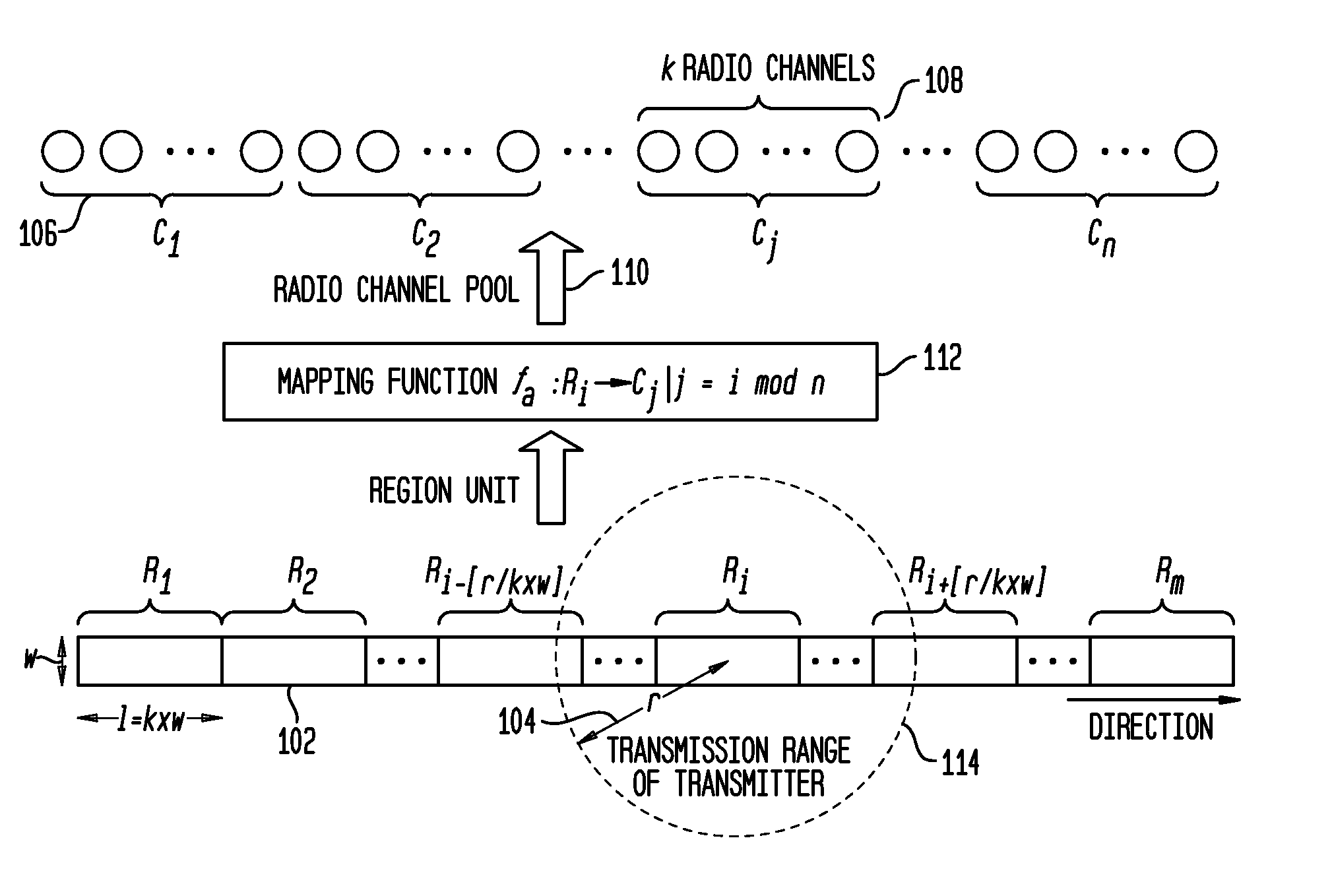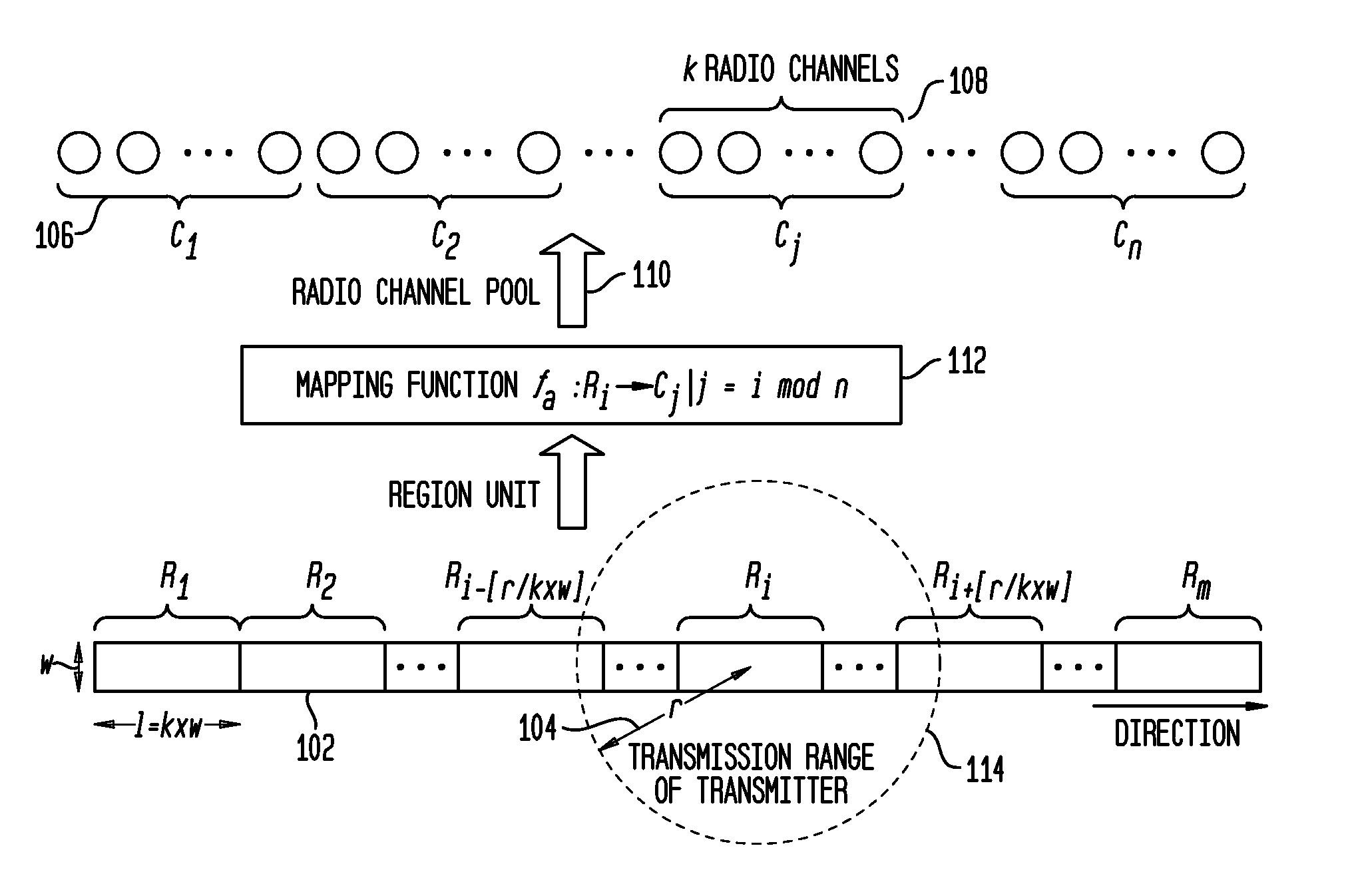Region-based clustering mechanism for channel access in vehicular Ad Hoc networks
a vehicular ad hoc network and clustering mechanism technology, applied in the field of region-based clustering mechanism for channel access in vehicular ad hoc networks, can solve the problems of contention-based schemes such as dsrc (e), new challenges, and inability to implement central repeaters, so as to improve radio bandwidth utilization, improve data transmission data throughput, and reduce delay
- Summary
- Abstract
- Description
- Claims
- Application Information
AI Technical Summary
Benefits of technology
Problems solved by technology
Method used
Image
Examples
Embodiment Construction
[0038]The invention will now be described in four sections.
[0039]Section 1. Region-based Channel Assignment: This section describes the division of the roadway into regions and the assignment of channels to the regions, where vehicles in a region may contend to acquire access to any of the channels assigned to that region.
[0040]Section 2. Constraints of R-SDMA Parameters: This section describes the constraints on related parameters when designing an R-SDMA scheme. These are constraints that need to be taken into consideration when setting the parameter values for R-SDMA.
[0041]Section 3. Contention Resolution Protocol: This section describes a prior art RR-ALOHO protocol, a peer-to-peer, distributed contention-resolution protocol that is employed by the vehicles traveling within the same region to arbitrate channel access and release requests. This prior art protocol is an integral part of the R-SDMA scheme. It will be apparent to those skilled in the art that any dynamic TDMA confli...
PUM
 Login to View More
Login to View More Abstract
Description
Claims
Application Information
 Login to View More
Login to View More - R&D
- Intellectual Property
- Life Sciences
- Materials
- Tech Scout
- Unparalleled Data Quality
- Higher Quality Content
- 60% Fewer Hallucinations
Browse by: Latest US Patents, China's latest patents, Technical Efficacy Thesaurus, Application Domain, Technology Topic, Popular Technical Reports.
© 2025 PatSnap. All rights reserved.Legal|Privacy policy|Modern Slavery Act Transparency Statement|Sitemap|About US| Contact US: help@patsnap.com



